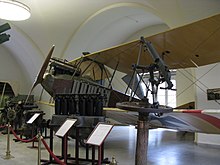
The Fokker D.VII is a German World War I fighter aircraft designed by Reinhold Platz of the Fokker-Flugzeugwerke. Germany produced around 3,300 D.VII aircraft in the second half of 1918. In service with the Luftstreitkräfte, the D.VII quickly proved itself to be a formidable aircraft. The Armistice ending the war specifically required, as the fourth clause of the "Clauses Relating to the Western Front", that Germany was required to surrender all D.VIIs to the Allies. Surviving aircraft saw much service with many countries in the years after World War I.

The Etrich Taube, also known by the names of the various later manufacturers who built versions of the type, such as the Rumpler Taube, was a pre-World War I monoplane aircraft. It was the first military aeroplane to be mass-produced in Germany.

The Albatros C.III was a twin-seat general-purpose biplane designed and produced by the German aircraft manufacturer Albatros Flugzeugwerke. It was produced in greater numbers than any other C-type aircraft by Albatros as well as being the company's most-produced twin-seat aircraft.

The Albatros C.I,, was a twin-seat general-purpose biplanes designed and produced by the German aircraft manufacturer Albatros Flugzeugwerke. It was the first of the successful C-series aircraft operated by the Luftstreitkräfte.

The Albatros B.II, was an unarmed two-seat reconnaissance biplane designed and produced by the German aircraft manufacturer Albatros Flugzeugwerke. It was the aircraft that brought Albatros Flugzeugwerke to the world's attention.
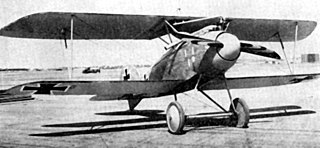
The Albatros D.III was a biplane fighter aircraft used by the Imperial German Army Air Service during World War I. A modified licensed version was built by Oeffag for the Austro-Hungarian Air Service (Luftfahrtruppen). The D.III was flown by many top German aces, including Wilhelm Frankl, Erich Löwenhardt, Manfred von Richthofen, Karl Emil Schäfer, Ernst Udet, and Kurt Wolff, and Austro-Hungarians like Godwin von Brumowski. It was the preeminent fighter during the period of German aerial dominance known as "Bloody April" 1917.
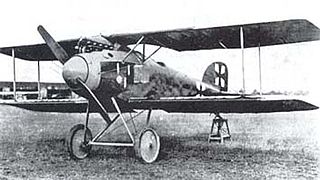
The Albatros D.II was a German fighter aircraft used during World War I. After a successful combat career in the early Jagdstaffeln, it was gradually superseded by the Albatros D.III.

The Austro-Hungarian Aviation Troops or Imperial and Royal Aviation Troops were the air force of the Austro-Hungarian Empire until the empire's demise in 1918; it saw combat on both the Eastern Front and Italian Front during World War I.

The Aviatik (Berg) D.I, was a single-engine, single-seater biplane fighter that was developed and manufactured by the Austro-Hungarian branch of German aircraft company Aviatik. It was also known as Berg D.I or the Berg Fighter, because it was designed by Dipl. Ing. Julius von Berg, and to distinguish it from the D.I fighter built by the parent Aviatik firm in Germany.
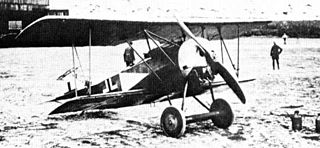
The Fokker D.VI was a German fighter aircraft built in limited numbers at the end of World War I. The D.VI served in the German and Austro-Hungarian air services.

The Fokker M 10 was a two-seater reconnaissance / trainer biplane with single-bay wings equipped with wing-warping controls for roll, powered by a 7-cylinder 80 hp Oberursel U.0 engine. Several M 10 aircraft were purchased by the Imperial and Royal Aviation Troops of Austro Hungary.

The Hansa-Brandenburg C.I, also known as Type LDD, was a 2-seater armed single-engine reconnaissance biplane designed by Ernst Heinkel, who worked at that time for the parent company in Germany. The C.I had similarities with the earlier B.I, including inward-sloping interplane bracing struts. Like other early-war Austro-Hungarian reconnaissance aircraft, such as C-types of Lloyd or Lohner, the Type LDD had a communal cockpit for its crew.

The Hansa-Brandenburg D.I, also known as the KD was a German fighter aircraft of World War I. Despite poor handling characteristics it was put into service by Austria-Hungary, where some aircraft served until the end of the war.
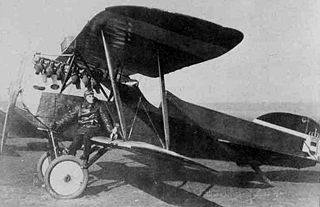
The Phönix D.I, with the D.II and D.III variants, was an Austro-Hungarian First World War biplane fighter built by the Phönix Flugzeug-Werke and based on the Hansa-Brandenburg D.I.
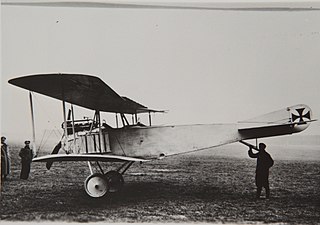
The Albatros B.III,, was a German World War I reconnaissance biplane, built by Albatros Flugzeugwerke as the Albatros LDD.
The Knoller C.I was a reconnaissance aircraft built in Austria-Hungary during World War I for use by the Austro-Hungarian army. It was a conventional biplane design with staggered wings, and seated the pilot and observer in tandem in an open cockpit. The upper wing was swept back.

The Phönix C.I, given serial numbers in the Phönix 121 range, was an Austro-Hungarian First World War reconnaissance and general-purpose biplane built by Phönix and Lloyd.
The Hungarian Lloyd Aircraft and Motor Factory Corporation was established in Aszód in 1913. The company started its operation in the factory building for the chassis and carpentry of the former Hungarian Royal Institute of Repair Workshop.



